Tennessee Centennial
The Tennessee Centennial Exposition was a large fair that was held in Nashville in 1897 to celebrate Tennessee’s 100th anniversary of becoming a state. The actual anniversary date was June 1, 1896, but because of money problems, the fair opened a year late.
The exposition opened May 1, 1897, to large crowds. It had been built on a former race track west of the city. New buildings were constructed and even a lake was dug.
The fair celebrated technology. There were exhibits on transportation, machines, agriculture, and commerce. There was a recreated Chinese village, a Mexican home, and the most famous, a replica of the Parthenon in Greece.
The exhibits also celebrated the social progress of women and blacks. The Woman’s Building featured displays about home arts and sponsored lectures by leading figures of the time including Jane Addams.
The Negro Building also had speakers and information about black achievements. Even with this celebration of African Americans, there was still strict segregation.
Fair organizers scheduled special days through the run of the fair. President William McKinley and his wife visited the fair in June. Famous band leader John Philip Sousa performed.
A floral parade was held in September. The parade featured at least 85 carriages pulled by horses dressed with all types of flowers, including roses, morning glories, violets, daisies, and chrysanthemums.
To children, the exposition “was a fairyland with beautiful white buildings, flowers, lakes and rides,” according to Mrs. George Frazier, who had visited the fair as a child. She remembered riding on gondolas with singing gondoliers, riding the ferris wheel and giant seesaw, and visiting the Egyptian Pyramid built by the city of Memphis.
Adam Adams, born in 1887, went to the Centennial every weekend. It costs 10 cents to get in, and had fireworks every night. He was especially fond of the camel rides which also cost 10 cents.
The exposition closed after six months and drew nearly 1.8 million people. The grounds became a new park, aptly called Centennial Park. Although the buildings were torn down, the people of Nashville were so fond of the replica of the Parthenon that the building was saved, although it had to be rebuilt in the 1920s with more durable materials.
Picture Credits:
- Photograph of the Parthenon building at the Tennessee Centennial Exposition in Nashville during 1897. Several people can be seen walking near the front of the building. Library of Congress.
- Photograph of the Vanity Fair water slide at the Tennessee Centennial Exposition in 1897 in Nashville. It shows numerous people watching a raft sliding into the pool. Tennessee State Library and Archives.
- Photograph showing a gondola on Lake Watauga at the Tennessee Centennial Exposition in 1897. It shows an oarsman riding a couple in a gondola. The Agricultural Building can be seen in the background. Tennessee State Library and Archives.
- Photograph showing the Irish-American Day Parade at the Tennessee Centennial Exposition in 1897. It shows a group of people watching numerous carriages. Library of Congress.
- Photograph of W. Spain’s Palace of Illusions and Mirrors at the Tennessee Centennial Exposition in 1897. It shows a small group of people standing on the steps outside of the castle like building. The building was part of the Vanity Fair amusement section of the exposition and featured a mirror maze. Tennessee State Library and Archives.
- Photograph of the giant See-Saw Ride at the Tennessee Centennial Exposition in 1897. Invented by the Nashville company, the see-saw was over 200 feet tall and could hold up to forty people at a time. The cost of the first ride was 25 cents and 10 cents for each additional ride. Tennessee State Library and Archives.
- Photograph showing a parade celebration for the Tennessee Centennial Exposition in 1897. It shows a large crowd of people watching a white float in the parade. Tennessee State Library and Archives.
- Photograph showing a parade carriage for the Tennessee Centennial Exposition. This photo was taken at High Street, now 6th Avenue, and Church Street in Nashville in 1897. It shows seventeen women and three men in a carriage pulled by horses in fancy harnesses with flowers. Tennessee State Library and Archives.
- Photograph entitled, “The Airship.” This photo was taken in Nashville in 1897. It shows a crowd of people watching a giant air balloon float. Tennessee State Library and Archives.
- Photograph showing the Tennessee Centennial Exposition at night in 1897 in Nashville. It shows the Parthenon and Pyramid with new electric lights. Tennessee State Library and Archives.
Confronting the Modern Era >> Life in Tennessee >> Having Fun >> Tennessee Centennial
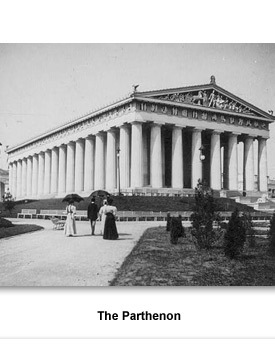
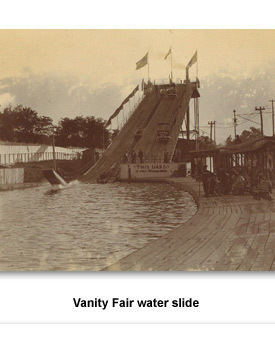
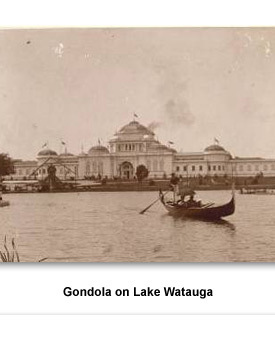
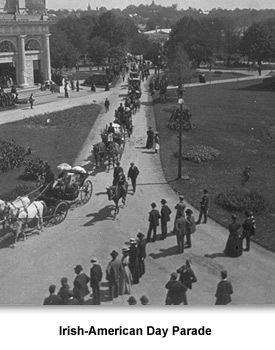
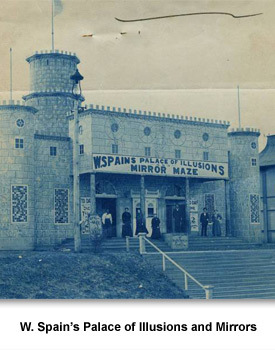
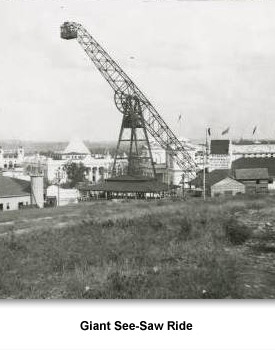
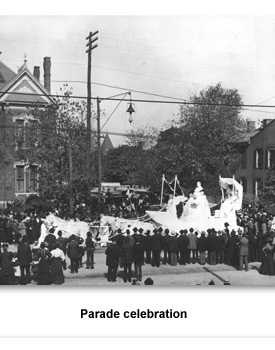
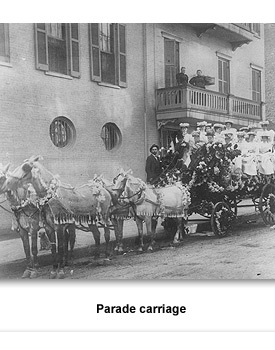
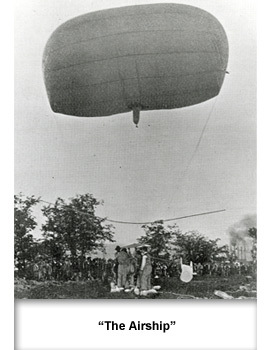
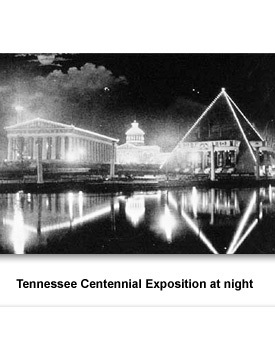
 Sponsored by: National Endowment for the Humanities
Sponsored by: National Endowment for the Humanities